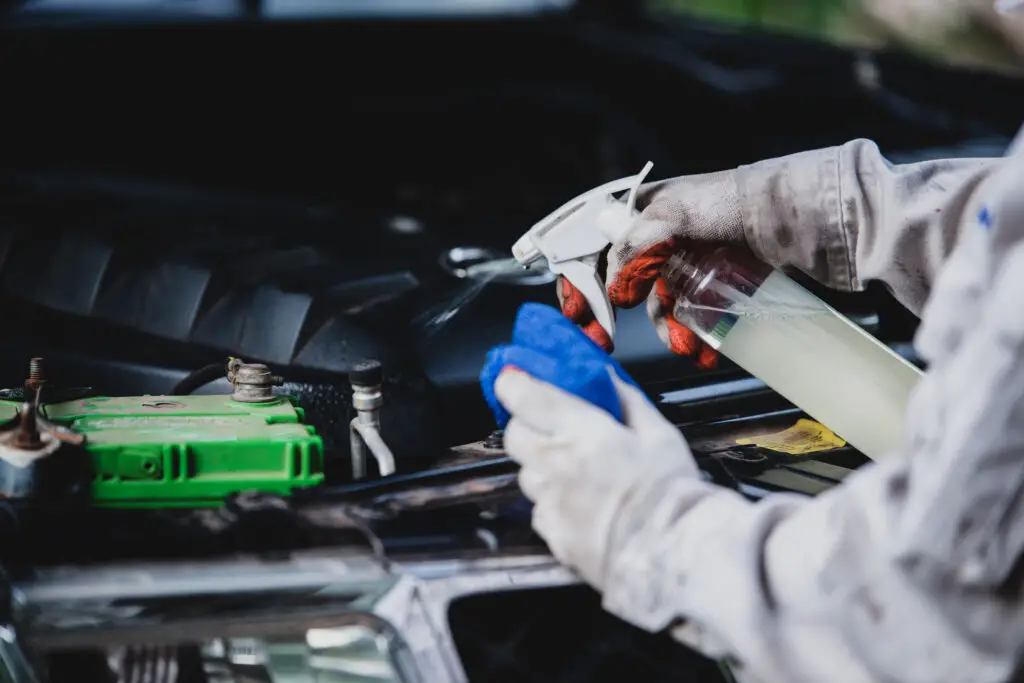Are you a car owner looking for how to clean corrosion off a car battery? Corrosion on your car battery terminals can lead to poor electrical connections, reduced battery efficiency, and even starting issues.
Thankfully, cleaning corrosion off a car battery is a straightforward task that can be done with a few household items. In this guide, we’ll show you how to safely and effectively clean corrosion from your car battery and keep it functioning optimally.
What Causes Battery Corrosion?
Battery corrosion often appears as a white, bluish, or greenish substance around the terminals. It typically forms due to:
- Electrolyte Leaks: From the battery casing or vents.
- Chemical Reactions: Between battery acid and the terminal metals.
- Overcharging: Excessive heat or gas buildup can accelerate corrosion.
Signs Your Battery Has Corrosion
- Difficulty starting the car.
- Visible buildup around the terminals.
- Dim headlights or electrical issues.
- A dashboard warning light for the battery.
Tools and Materials You’ll Need
Before starting, gather these items:
- Safety goggles and gloves.
- Baking soda.
- Water.
- Old toothbrush or a wire brush.
- Clean cloth or rag.
- Petroleum jelly or terminal protectant spray.
- Wrench (to disconnect the battery terminals).
Step-by-Step Guide to Cleaning Battery Corrosion
Step 1: Ensure Safety First
- Turn off the engine and remove the key from the ignition.
- Wear safety goggles and gloves to protect against battery acid.
Step 2: Disconnect the Battery Terminals
- Use a wrench to loosen the negative terminal (-) first, then the positive terminal (+).
- Always disconnect the negative terminal first to avoid electrical shorts.
Step 3: Prepare a Cleaning Solution
- Mix 1 tablespoon of baking soda with 1 cup of water.
- This mixture neutralizes the acidic corrosion.
Step 4: Apply the Solution
- Dip the old toothbrush or wire brush into the baking soda solution.
- Gently scrub the corroded areas, focusing on the terminals and clamps.
- You may see some fizzing as the baking soda reacts with the corrosion, which is normal.

Step 5: Rinse and Dry
- Use a damp cloth or spray bottle with clean water to rinse away the baking soda residue.
- Dry the terminals thoroughly with a clean cloth or rag to prevent moisture from causing further corrosion.
Step 6: Reconnect the Terminals
- Reconnect the terminals, starting with the positive terminal (+) and then the negative terminal (-).
- Tighten them securely but avoid over-tightening, which could damage the terminals.
Step 7: Apply a Protective Layer
- Apply a thin layer of petroleum jelly or use a terminal protectant spray.
- This step helps prevent future corrosion by reducing exposure to moisture and air.
Pro Tips for Preventing Battery Corrosion
- Inspect Regularly: Check the battery and terminals every few months for signs of corrosion.
- Keep It Clean: Wipe the battery surface to remove dirt and moisture.
- Install Anti-Corrosion Washers: Place felt washers (treated with anti-corrosion chemicals) under the terminal clamps.
- Avoid Overcharging: Ensure your alternator and charging system are functioning properly to prevent overcharging.
When to Replace the Battery
If corrosion persists even after cleaning, or if the battery shows other signs of failure (like swollen casing or reduced performance), it might be time to replace the battery. Consult a professional if you’re unsure.
Final Thoughts
Cleaning corrosion off your car battery is a simple task that can save you from potential breakdowns and extend the life of your battery. By following these steps and practicing regular maintenance, you’ll keep your vehicle running smoothly and avoid costly repairs.
If you have persistent battery issues or questions about car maintenance, reach out to a trusted mechanic or battery specialist.
Discover more from Chikwem
Subscribe to get the latest posts sent to your email.